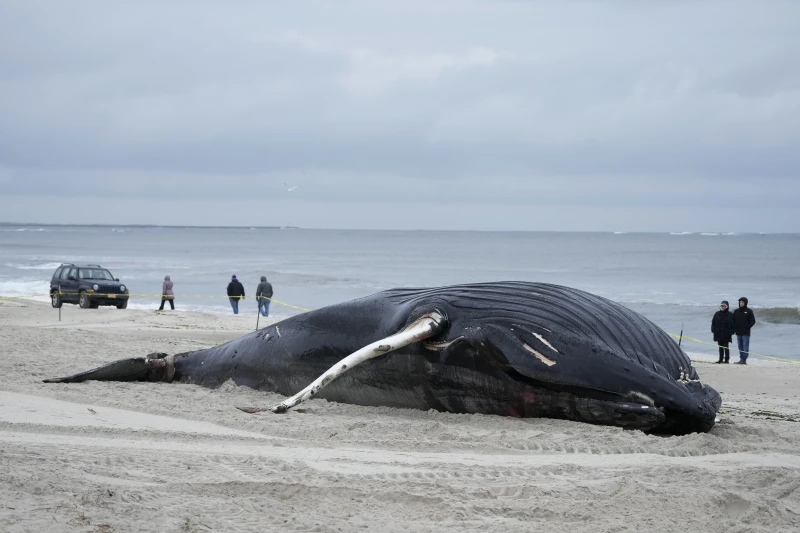The intersection of environmental conservation and renewable energy has become a battleground for conflicting narratives and misinformation.
The recent emergence of unfounded claims linking offshore wind farms to the endangerment of whales has sparked controversy and raised questions about the future of renewable energy initiatives.
This issue has gained significant attention, with notable figures, including former President Donald Trump, perpetuating the unverified assertion that the construction and operation of offshore wind turbines pose a threat to whales.
As the debate intensifies, it is crucial to separate fact from fiction and critically examine the implications of offshore wind projects on marine life, particularly the rare North Atlantic right whale.
In doing so, we can better understand the true impact of renewable energy development and make informed decisions about its role in our sustainable future.
The assertion that offshore wind farms are responsible for whale deaths is not supported by credible scientific evidence.
Leading experts and researchers have consistently emphasized that there is no substantiated link between the operation of offshore wind turbines and harm to whale populations.
Despite this, conservative groups and anti-development factions have propagated these claims, fueling a misguided narrative that threatens to undermine the progress of renewable energy initiatives.
To address this issue, it is essential to examine the current landscape of offshore wind projects in the United States. Presently, two commercial offshore wind farms are under construction, with additional pilot projects and ambitious targets for future expansion.
The South Fork Wind, located off the coast of New York, and the Vineyard Wind off Massachusetts are poised to become operational in the near future.
These projects represent a significant step towards achieving the Biden administration’s goal of powering 10 million homes with offshore wind by 2030, aligning with broader climate objectives.
Furthermore, the development of offshore wind energy presents a compelling opportunity to transition towards a more sustainable and environmentally friendly energy infrastructure.
By harnessing the power of wind, we can reduce our reliance on fossil fuels and mitigate the impacts of climate change.
This transition is pivotal in addressing the urgent need to curb greenhouse gas emissions and preserve our planet for future generations.
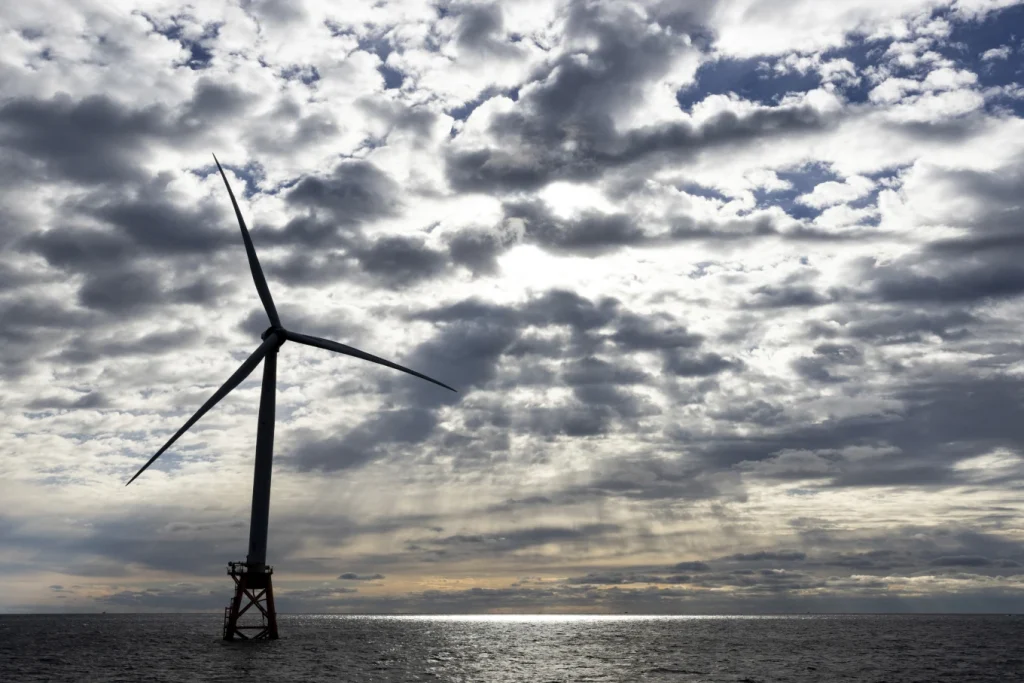
In the context of marine conservation, it is imperative to consider the potential impact of offshore wind projects on whale populations.
While it is essential to approach these developments with caution and environmental responsibility, it is equally crucial to dispel unfounded claims that misrepresent the relationship between offshore wind and whale endangerment.
The protection of marine life and the advancement of renewable energy are not mutually exclusive goals; rather, they can and should coexist through thoughtful planning, research, and collaboration.
Moving forward, it is imperative to prioritize evidence-based discourse and informed decision-making regarding offshore wind development.
This necessitates a concerted effort to counter misinformation and elevate the voices of scientists and experts who can provide valuable insights into the complex interplay between renewable energy and marine ecosystems.
By fostering a transparent and fact-based dialogue, we can navigate the challenges and opportunities associated with offshore wind projects in a manner that upholds environmental stewardship and promotes sustainable progress.
In conclusion, the debate surrounding offshore wind and its alleged impact on whales underscores the need for rigorous scrutiny and informed discourse.
By examining the facts and dispelling unfounded claims, we can cultivate a more nuanced understanding of the relationship between renewable energy and marine conservation.
It is imperative to approach this issue with a commitment to scientific integrity, environmental responsibility, and the collective pursuit of a sustainable future.
As we navigate the complexities of renewable energy development, let us strive to uphold the principles of truth, evidence, and collaboration in shaping a path forward that benefits both our planet and its inhabitants.
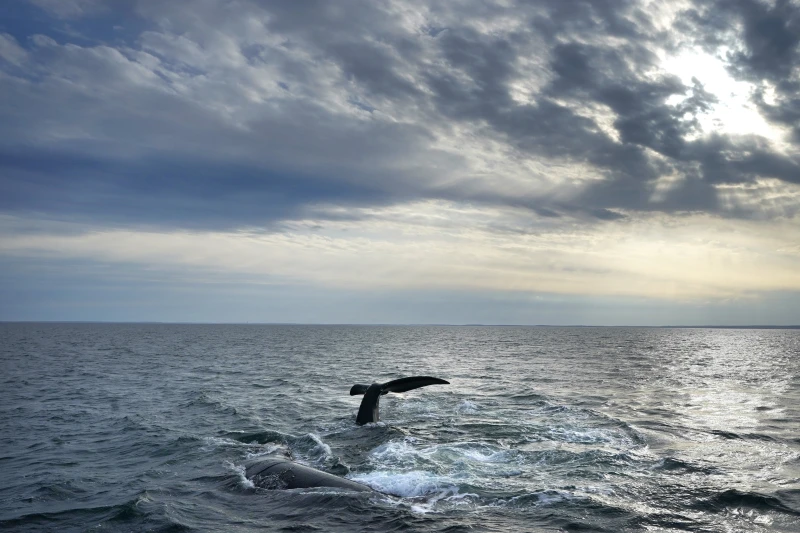
In summary, the claims linking offshore wind farms to whale deaths lack credible evidence, and it is crucial to separate fact from fiction in the discussion about the impact of offshore wind projects on marine life.
The development of offshore wind energy presents an opportunity to transition towards a more sustainable and environmentally friendly energy infrastructure, and it is essential to prioritize evidence-based discourse and informed decision-making regarding offshore wind development.
By fostering a transparent and fact-based dialogue, we can navigate the challenges and opportunities associated with offshore wind projects in a manner that upholds environmental stewardship and promotes sustainable progress.
The relationship between wind farms and the deaths of whales has been a subject of heated debate and controversy in recent years.
Allegations and speculations have surfaced, suggesting a direct correlation between the construction of wind farms along the Atlantic Coast of the United States and the increasing number of whale deaths in the region.
However, it is crucial to critically examine the evidence and expert opinions to gain a comprehensive understanding of this complex issue.
Contrary to politically motivated claims, experts in the field have emphasized that there is a lack of conclusive evidence linking the limited construction of wind farms to whale deaths along the Atlantic Coast.
The emergence of rumors regarding this purported correlation coincided with a surge in the number of whales found dead or stranded on New England beaches, predating the major offshore wind farm construction that commenced in the region.
Marine biologists, such as Aaron Rice from Cornell University, have refuted the notion that offshore wind is responsible for the whale strandings, underscoring the need to base assertions on empirical data and scientific investigation.
Furthermore, the National Oceanic and Atmospheric Administration (NOAA) reported that a significant proportion of recovered whale carcasses exhibited evidence of death resulting from fishing gear entanglement or vessel strikes, with the remaining cases lacking a specific cause.
Drawing from the experiences of European nations, where offshore wind development has been underway for over three decades, national agencies have not established causal links between wind farms and whale deaths.
In the United States, ongoing research endeavors are being undertaken to monitor potential impacts of offshore wind farms on whales, encompassing alterations in behavior and changes to migration routes.
This preliminary research, spearheaded by scientists such as Doug Nowacek from Duke University, is supported by federal funding and aims to provide invaluable insights into the interactions between wind farms and marine life.
While the precise causes of recent whale strandings remain largely unknown, it is imperative to acknowledge the genuine threats posed to whales by human activities.
Shipping collisions and entanglement in fishing gear have been identified as the primary dangers, with underwater noise pollution emerging as an additional concern.
Advocates for whale conservation have highlighted the importance of addressing these tangible threats, cautioning against the misdirection of attention and resources towards unsubstantiated claims regarding offshore wind power.
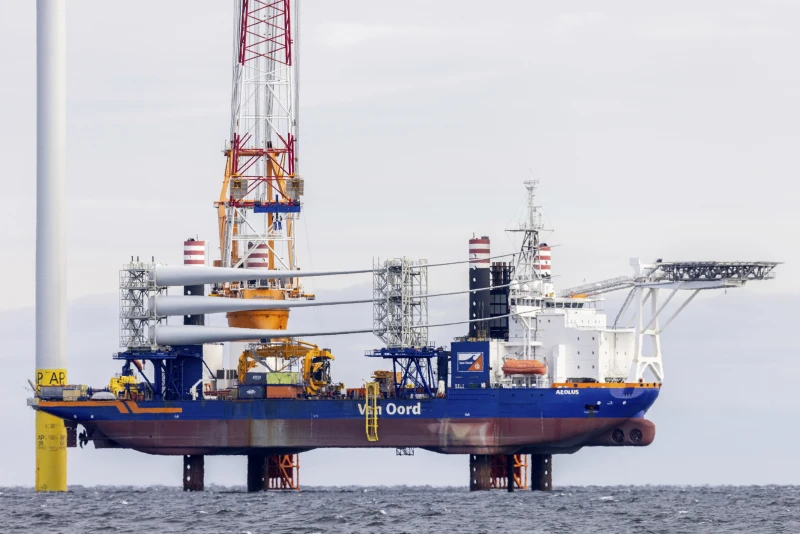
The plight of humpback whales, characterized by an alarming increase in mortality rates since 2016, has been classified by the federal government as an “unusual mortality event.”
Furthermore, the critically endangered North Atlantic right whale, with a population of fewer than 360 individuals, is also experiencing a similar unprecedented mortality event.
NOAA’s report of 83 whale deaths off the East Coast since December 1, 2022, including a significant number of humpbacks and critically endangered right whales, underscores the urgency of addressing the multifaceted challenges confronting these iconic marine mammals.
In conclusion, the discourse surrounding the alleged impact of U.S. wind farms on whale deaths necessitates a meticulous and evidence-based approach.
While assertions linking offshore wind construction to whale mortality have been propagated for political or ideological agendas, the scientific community emphasizes the absence of direct evidence supporting such claims.
Instead, the genuine dangers faced by whales from human activities, including shipping collisions, fishing gear entanglement, and underwater noise pollution, demand concerted efforts for mitigation and conservation.
As ongoing research endeavors seek to shed light on the interactions between wind farms and marine life, it is imperative to prioritize the preservation of whale populations through informed decision-making and proactive conservation measures.
It is important to address the issue of protecting whales near offshore wind farms, as it has been a subject of concern and debate.
Efforts are being made to minimize the potential impact of marine construction projects on marine mammals, including whales.
Federal law imposes limits on human-generated underwater sound, both continuous noise and short sudden bursts, in order to protect marine life.
Various measures are being implemented to safeguard whales near offshore wind farms. For instance, construction activities may be paused during migration seasons, and technologies such as “bubble curtains” are utilized to contain sound from pile-driving.
Additionally, trained observers equipped with binoculars are stationed on ships to monitor and look out for marine mammals.
Furthermore, offshore wind developers are voluntarily adopting additional measures to ensure the safety of marine mammals, such as avoiding pile driving during specific months when whales are most active and employing underwater acoustic monitoring.
While offshore wind developers are taking steps required by regulators and voluntarily adopting measures to protect marine mammals, there are still allegations that wind farms cause whale deaths.
Some individuals and organizations have raised concerns about the impact of offshore wind projects on wildlife, with claims ranging from unsightliness to potential threats to marine life.
However, these claims have been refuted by industry representatives as politically-driven misinformation, lacking scientific basis.
The spread of misinformation about harm to whales from offshore wind farms has led to opposition against these projects, particularly in coastal communities such as New Jersey.
This misinformation can cause angst and concern among local residents, potentially hindering the development of offshore wind farms.
In response to opposition, some Republican politicians have called for investigations into the industry’s impacts on commercial fishing and marine life, and have advocated for a moratorium on offshore wind projects.
It is important to note that whales are impacted by climate change, and some advocates argue that renewable energy sources, such as offshore wind, can help mitigate these impacts.
Climate change has altered the distribution of the right whale’s preferred food source, leading them to venture into areas where they are more vulnerable to ship strikes and entanglements.
Given the important role that large whales play in the ecosystem, including carbon storage, addressing climate change is crucial to their conservation.
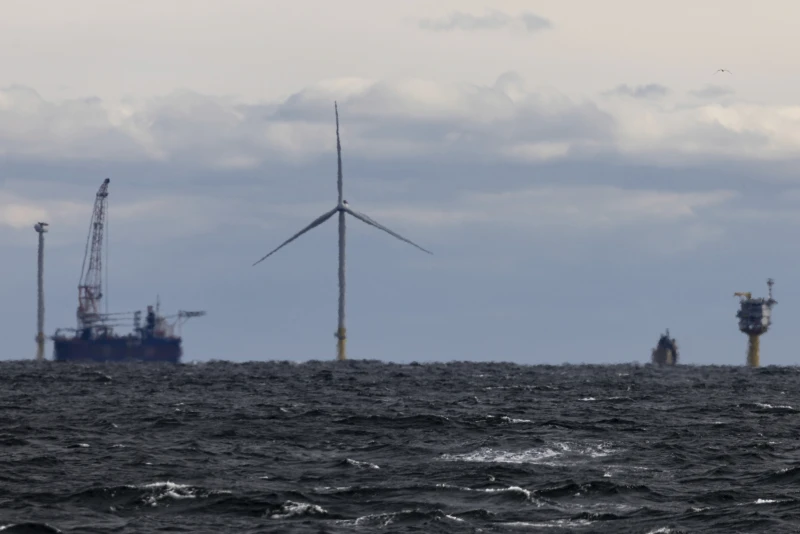
In conclusion, efforts are being made to protect whales near offshore wind farms, with measures such as sound mitigation technologies, seasonal construction pauses, and voluntary adoption of protective measures by wind developers.
It is essential to address misinformation and consider the broader environmental context, including the impact of climate change on marine life, in discussions about offshore wind projects and their potential effects on whales.
